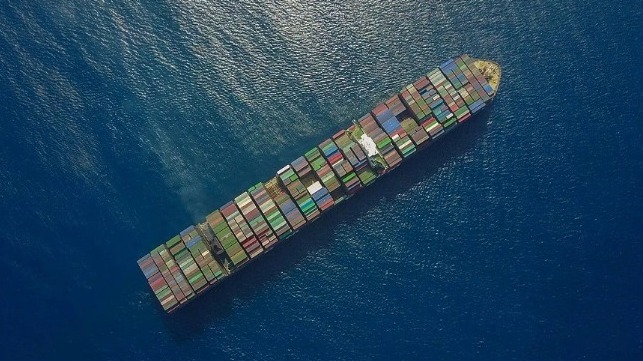IMF: Higher Shipping Costs Will Drive Inflation Throughout 2022

After a year in which shipping costs worldwide skyrocketed in part due to massive volume increases and the impact of the pandemic, researchers from the International Monetary Fund set out to explore how soaring shipping costs are contributing to rising costs and inflation. They concluded that dramatic increases in shipping costs are having a slow but consistent impact contributing to inflation with the impact likely to continue to build through the end of this year.
“We find that shipping costs are an important driver of inflation around the world,” the IMF writes in its weekly blog post prepared by the staff and officials on pressing economic and policy issues. “When freight rates double, inflation picks up by about 0.7 percentage point. Most importantly, the effects are quite persistent, peaking after a year and lasting up to 18 months. This implies that the increase in shipping costs observed in 2021 could increase inflation by about 1.5 percentage points in 2022.”
The IMF research predated the war in Ukraine with their analysis adding that the conflict will likely exacerbate global inflation. They looked at data from 143 countries over the past 30 years, reporting that the inflationary impact of higher shipping costs builds over time. After the pandemic was declared in March 2020, they noted that it resulted in a shortage of workers at ports to move containers which account for more than 80 percent of the world’s traded goods as well as the travel restrictions that impacted crew movement and trucking. Other factors included the creation of pent-up demand from huge stimulus programs during extended lockdowns that overwhelmed the capacity of supply chains.
The result of those challenges was that the cost of shipping a container on the world’s transoceanic trade routes increased seven-fold in the 18 months following March 2020. They also highlight that the cost of shipping bulk commodities spiked even more.
“While the pass-through to inflation is less than that associated with fuel or food prices—which account for a larger share of consumer purchases—shipping costs are much more volatile. As a result, the contribution in the variation of inflation due to global shipping price changes is quantitatively similar to the variation generated by shocks to global oil and food prices.”
Further, the research shows that while higher shipping costs hit prices of imported goods at the dock within two months, and quickly pass through to producer prices, the impact on the prices consumers pay at the cash register builds up more gradually, hitting its peak after 12 months. This is a much slower process than what is seen after a rise in global oil prices, which drivers feel at the pump within a couple of months.
Rising shipping costs affect inflation in some countries more than others the IMF reports with the structural characteristics of an economy affecting the impact. Countries that import more of what they consume see larger increases in inflation, as do those who are more integrated into global supply chains. Similarly, countries that typically pay higher freight costs—landlocked countries, low-income countries, and especially island states—see more inflation when these rise, says the IMF. A strong and credible monetary policy framework can play a role in mitigating the second-round effects from import prices and inflation.
The IMF concludes that the inflationary impact of shipping costs will continue to build through the end of 2022. This they report will create complicated trade-offs for many central bankers facing increasing inflation and still ample slack in economic activity. Moreover, the war in Ukraine is likely to cause further disruptions to supply chains, which could keep global shipping costs—and their inflationary effects—higher for longer.
